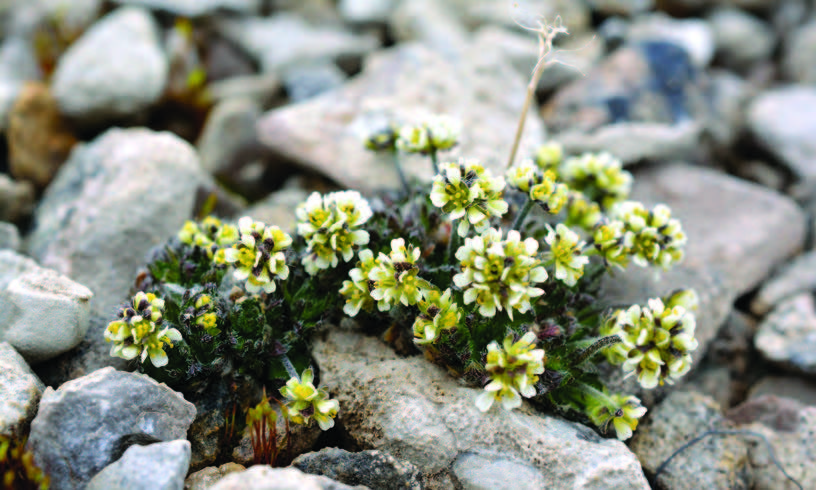Introducing Draba Subcapitata
20 avril 2022
In the summer of 2021, through its environmental monitoring program, CRI monitored populations of Ellesmere Island whitlow-grass, a rare plant found in Nunavik, but also identified as a vulnerable species in Quebec.
In fact, during characterization work carried out for the impact study in preparation for the Allammaq deposit mining project in 2010, this special status plant, whose Latin name is Draba subcapitata, was catalogued in certain sectors of the project.
To ensure the longevity of these populations of Ellesmere Island whitlow-grass, CRI undertook to carry out monitoring to mitigate impacts on this plant and to measure the real effects of mining activities on their distribution, abundance and health. This monitoring was carried out 5 times in the past 10 years by botanists and the results are presented to the different authorities in an annual environmental monitoring report. Since the beginning of the monitoring initiative, the populations of Ellesmere Island whitlow-grass have displayed good health and do not seem to be impacted by the mining activities in the vicinity. To perform the monitoring, the sectors where the plant was catalogued are divided into 50 cm by 50 cm plots and are carefully explored on foot. The GPS coordinate of each population is recorded to facilitate monitoring over the years. Given the size of the sectors, approximately three days of work are needed to cover them all.
Ellesmere Island whitlow-grass grows to barely 15 to 20 cm and is characteristic of the northern environment. It has a high tolerance to wind and generally grows in a type of soil called the ostiole tundra, a particularly rocky environment. It is in the Brassica family (just like cabbage!), its leaves are rosette-shaped and its flowers, white and delicate, can be seen only a few days in the month of July.
The sectors targeted by the environmental monitoring initiative are surrounded by visual markers that prohibit access in order to keep the populations from being impacted by human activity.
Several dozen plant species were catalogued on the Nunavik Nickel Project site, reflecting a level of biodiversity in northern environments for which documentation is mostly lacking. The environmental monitoring of the Ellesmere Island whitlow-grass is one of the examples of CRI’s commitment to the protection of biodiversity.
Aussi à lire
Siège social
800, boul. René-Lévesque O.
Bureau 410
Montréal (Québec) H3B 1X9
| Tel.: | 514 879-1688 |
| Sans frais: | 877 879-1688 |
| Telec: | 514 879-1795 |

